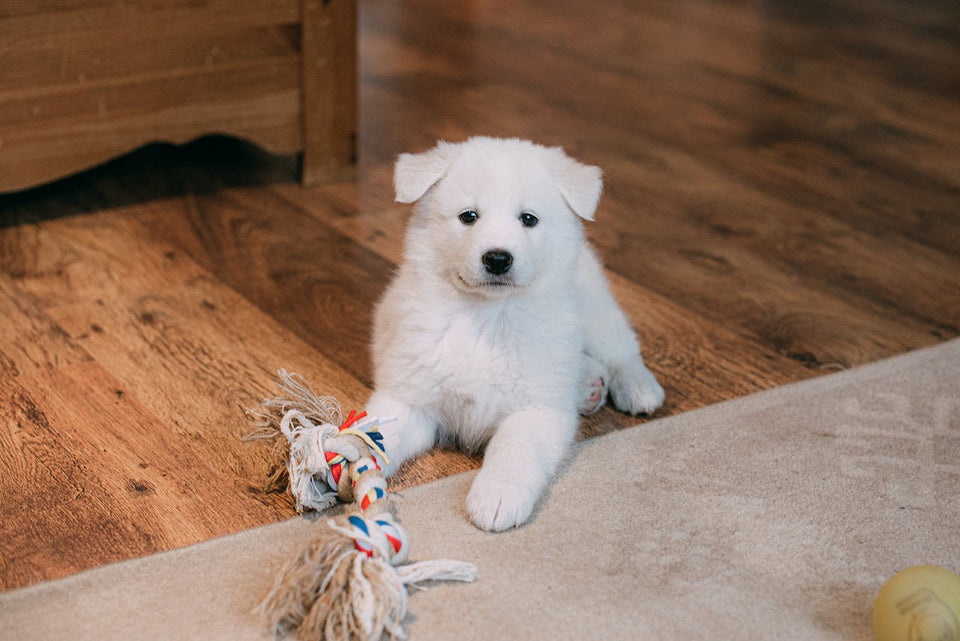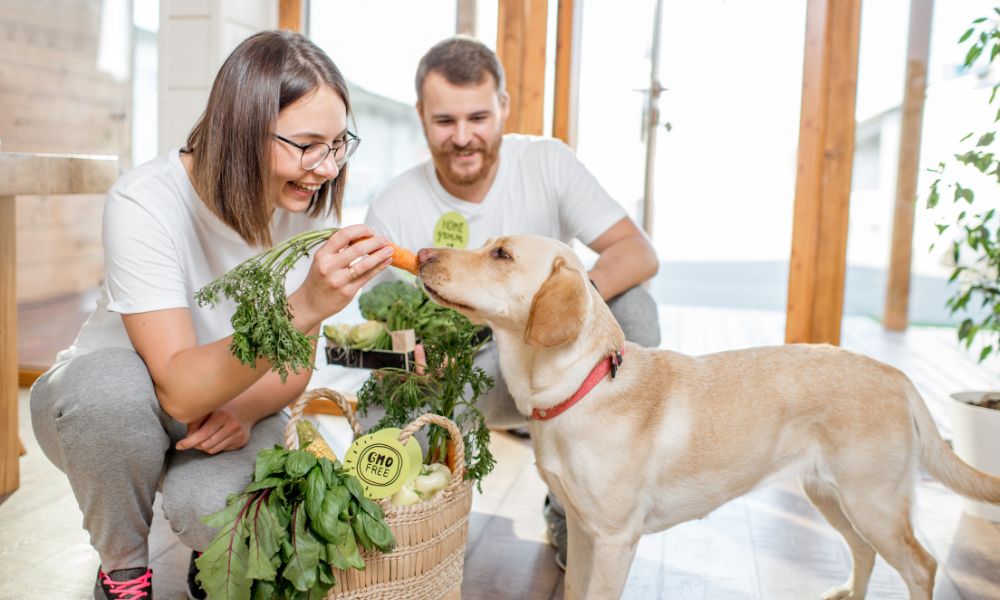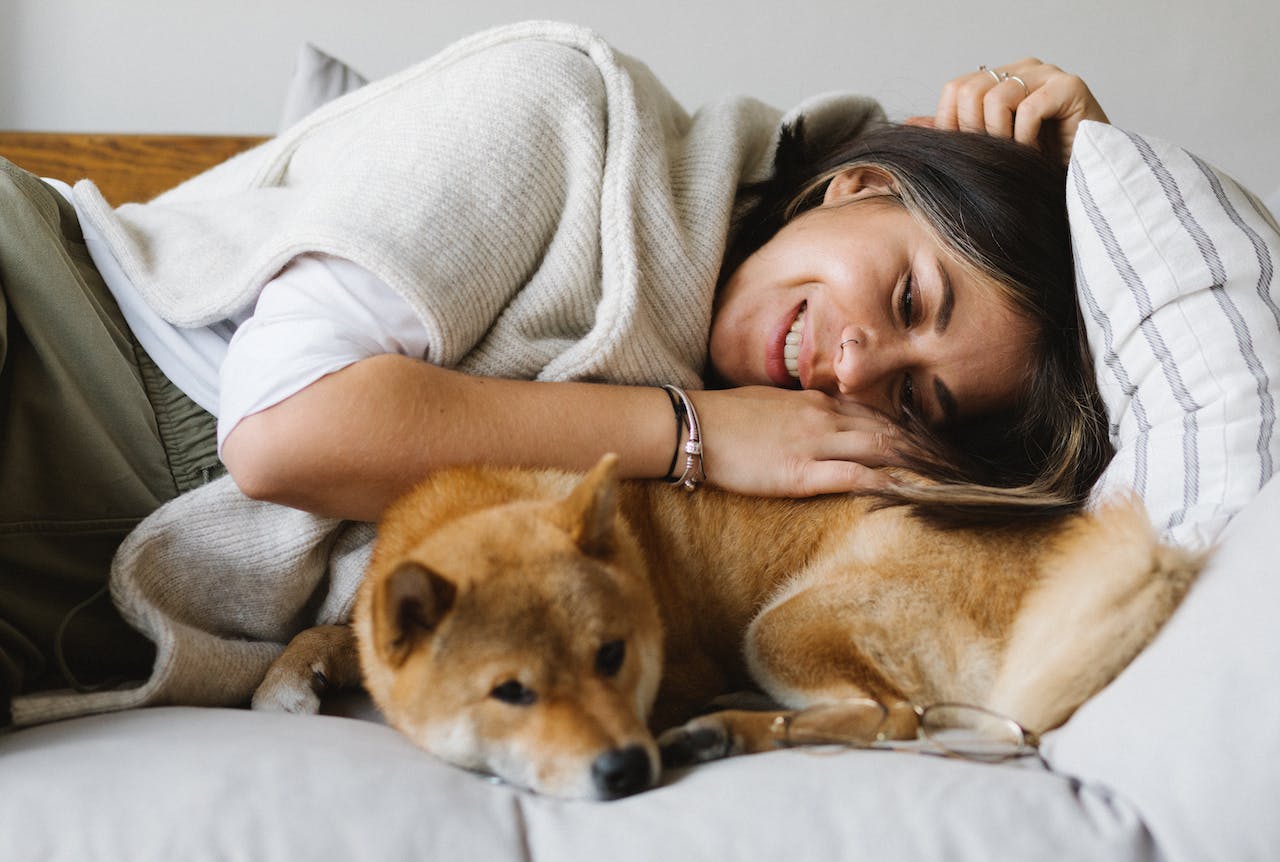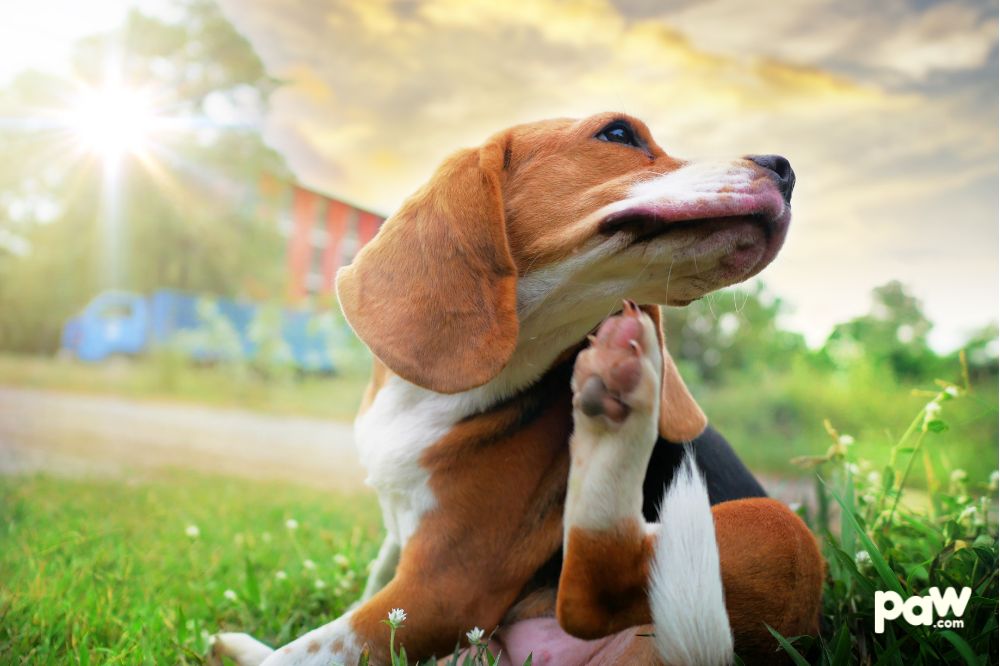
How to Puppy-Proof Your House

Bringing a puppy into your home is an exciting journey. It requires preparation. Your home needs to be a safe environment for your new furry friend. This guide is tailored to help you puppy-proof your house effectively.
Start by inspecting your home from a puppy's perspective. Get down to their level. Look for potential hazards. Puppies are curious and love to explore. They often explore with their mouths. Remove anything that could be harmful if chewed or swallowed.
Secure all electrical cords. Puppies might chew on them. This can cause serious injury. Use cord protectors or conceal them behind furniture. Keep your puppy safe.
Store household chemicals out of reach. Cleaning products, pesticides, and medications are dangerous. They should be in high cabinets or locked drawers. Prevent accidental poisoning.
Furniture and decorations can also pose risks as well. Secure loose items. These include small objects, fragile decorations, and unstable furniture. Prevent accidents and injuries.
Your garden needs attention as well. Some plants are toxic to dogs. Remove or fence off these plants. Ensure the yard is escape-proof. Check for gaps in fences or gates.
Stay tuned for more detailed tips. Keep reading to learn more about puppy-proofing specific areas of your home. Your puppy's safety is paramount. With the proper precautions, your home can be a haven for your new companion.
Related: New Puppy Checklist: 14 Must Have Essentials
Securing Hazardous Areas
Creating a safe environment starts with identifying danger zones. Areas like kitchens and bathrooms often house hazards. Keep these areas off-limits unless supervised. Use physical barriers to restrict access.
Baby gates and playpens are invaluable tools. They help keep your puppy in safe zones. Ensure they are sturdy and well-secured. This prevents your puppy from wandering into unsafe areas.
Stairs and elevated areas pose a risk. Puppies can easily fall and injure themselves. Use gates to block staircases. Avoid leaving your puppy unattended on furniture or high places.
Designate a specific area in your home as a puppy zone. This should be a safe, comfortable space. It needs to be free from hazards and filled with safe toys.
Constant supervision is crucial, especially in the early days. Always keep an eye on your puppy. This helps prevent accidents and reinforces good behavior.
Managing Electrical and Choking Hazards
Puppies may chew on electrical cords, risking electrocution. Keep cords out of reach. Use cord protectors where necessary.
Small objects can be choking hazards. Keep them away from your puppy. Regularly check floors and low surfaces for potential dangers.
Opt for appliances and electronics that are pet-friendly. Avoid those with accessible small parts or cords.
Regularly inspect your home for new hazards. Puppies grow and can reach more as they do. Always stay one step ahead.
Ensure all family members know the puppy-proofing rules. Consistency is key to maintaining a safe environment.
Safe Storage of Toxic Substances
Many common household items are toxic to puppies. Know what these are. Keep a list for reference.
Store cleaning products and chemicals securely. High shelves or locked cabinets are ideal. Prevent accidental poisoning.
Medications should be stored safely. They can be very harmful to puppies. Ensure they are inaccessible.
Some houseplants are toxic to dogs. Identify and remove these plants or place them well out of reach.
A locked cabinet is essential for storing hazardous materials. This ensures your puppy can't accidentally access them.
Puppy-Proofing Your Furniture and Belongings
Puppies often chew and scratch as they explore. Protect your furniture. Use covers or deterrent sprays.
Be mindful of the materials in your home. Some can be harmful if chewed. Choose puppy-safe materials wherever possible.
Secure or remove loose items and valuables. Puppies can easily knock these over or chew them.
Offer your puppy safe chew toys. This diverts their attention from furniture and belongings. It also aids in their development.
Training is essential. Teach your puppy what is off-limits. Consistent training helps establish boundaries.
Are you concerned about your furniture while puppy-proofing your home? Look no further. Paw.com offers a range of stylish and durable blankets perfect for safeguarding your sofas and chairs.
Preparing Outdoor Spaces for Safety
Ensure fences and gates are secure and puppy-proof. Check for gaps or weak spots. Prevent escape attempts.
Garden chemicals and certain plants can be harmful. Remove or secure these. Keep your garden safe for your puppy.
Create a safe outdoor play area. This should be secure and free from hazards. It allows your puppy to enjoy the outdoors safely.
Always supervise your puppy when they are outside. This ensures they don't get into trouble or escape.
Allow your puppy some freedom to explore. But balance this with safety precautions. It ensures they are safe while enjoying the outdoors.
Are you completing your puppy-proofing checklist? Remember your furniture. Paw.com blankets are ideal for protecting your furnishings from scratches, spills, and dog hair.
Establishing Safe Eating and Sleeping Areas
Select a comfortable and safe bed for your puppy. Place it in a quiet, secure area. It should be easily accessible for your puppy.
Ensure food and water bowls are safe and accessible. They should be the right size for your puppy. Keep them clean.
Maintain cleanliness in eating and sleeping areas. This prevents the spread of germs and ensures your puppy's health.
Keep an eye on your puppy’s diet. Ensure they are eating properly. Adjust food and portions as they grow.
Establish a routine for feeding and sleeping. This provides structure and comfort for your puppy. It helps in their overall well-being.
Related: How to Properly Wash Dog Beds
Ensuring a Safe and Happy Home for Your Puppy
Puppy-proofing your home is a vital step in ensuring the safety and happiness of your new furry family member. You can create a secure and nurturing environment by following the key steps outlined in this guide. Remember, a safe home is a happy home for your puppy.
A well-prepared home offers long-term benefits for both you and your puppy. It reduces the risk of accidents and injuries. It also eases the stress of monitoring a curious and energetic puppy. A safe environment fosters a healthy, happy, and well-adjusted pet.
Responsible pet ownership starts with preparation. It extends to ongoing care and attention. You are taking a significant step towards responsible pet ownership by puppy-proofing your home. This commitment extends to all aspects of your puppy's care and well-being.
For further information on puppy care, there are numerous resources available. These include veterinarian advice, pet care websites, and puppy training and health books. Stay informed and up-to-date on the best practices for puppy care.
We invite you to share your own puppy-proofing experiences. Your insights could be invaluable to other new puppy owners. Sharing stories and tips helps create a community of informed and responsible pet owners. Your experience could make the journey easier for someone else. Your contribution is appreciated.
Share this article
written by


